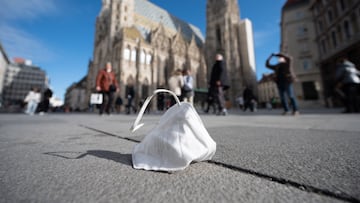How fast does sneeze travel and how far can it go?
Videos and images from Lydia Bourbouiba’s lab at MIT show that sneeze can travel up to 27 feet.

According to research by scientists at the Massachusetts Institute of Technology, a sneeze can launch germs way farther than 6 feet.
Depending on the temperature and humidity, a sneeze can travel about 27 feet, or 8 meters. Warmer, moisture environments can suspend respiratory droplets in the air for a longer time. Smaller droplets can also remain in the air for longer periods, while large droplets fall more rapidly to the ground after a sneeze.
Lydia Bourouiba, a fluid dynamics scientist at MIT, has spent the last few years studying the distance traveled by expulsions from the human body, using high-speed cameras and light.
Slowed to 2,000 frames per second, video and images from Bourbouiba’s lab show that a fine mist of mucus and saliva can break out from a person’s mouth at around a hundred miles an hour.
How far can droplets from a sneeze travel, and just how much do masks help prevent those droplets from spreading #COVID19? In this video, fluid dynamicist Lydia Bouroubia of @MIT weighs in https://t.co/cPvHja0FPS#mathematics
— The Fields Institute (@FieldsInstitute) April 6, 2020
Bourouiba also found that the sneeze produces a hot, moist gas cloud, which helps the expelled respiratory particles avoid evaporation longer. Ventilation systems or airflow in any given space can contribute to sneezes traveling further. Turbulence within an expelled gas cloud can also affect the distance a sneeze will fly.
Understanding virus spread
Understanding how these clouds travel and disperse is crucial to containing an infectious respiratory disease like covid-19.
Bourouiba’s research emphasizes a continuous scientific debate about how the new coronavirus makes its way through the air, suggesting such airborne transfer may be more likely than previously thought.
Related stories
Guidance from the U.S. Centers for Disease Control and Prevention does not take fluid dynamics into account, as it recommends people stay at least six feet apart from one another. Bourouiba and her colleagues have registered a droplet from a sneeze traveling more than four times that distance. While sneezing is not one of the common symptoms of the coronavirus, an asymptomatic person with a random sneeze could still spread the germ, says Bourouiba.
“That has implications for how many people you can put in a space,” says Bourouiba. “It has implications for how to handle teamwork and meetings, especially if the airflow isn’t changed regularly.”


